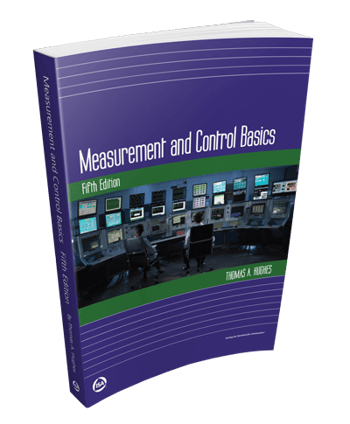AutoQuiz is edited by Joel Don, ISA's social media community manager.
This automation industry quiz question comes from the ISA Certified Control Systems Technician (CCST) program. Certified Control System Technicians calibrate, document, troubleshoot, and repair/replace instrumentation for systems that measure and control level, temperature, pressure, flow, and other process variables. Click this link for more information about the CCST program.
A gauge pressure transmitter that measures the pressure in a 150 # high pressure steam header is mounted 6 feet below the center line of the header. The tap for the impulse line connects to the top of the header and rises 2 feet above the header center line, extends horizontally for 3 feet, and then drops down to the transmitter. In order to read the pressure in the steam header correctly, the transmitter output must be:
a) calibrated for suppressed zero, the suppression equal to 8 feet of liquid head pressure
b) calibrated for suppressed zero, the suppression equal to 6 feet of liquid head pressure
c) calibrated for elevated zero, the elevation equal to 8 feet of liquid pressure
d) calibrated for true zero
e) none of the above
At zero gauge pressure in the steam line, you are essentially suppressing (pushing) the transmitter output back down to zero after the system reaches equilibrium with the 8 feet of impulse line full of liquid. The transmitter will read that impulse line liquid head pressure plus any pressure exerted on top of the liquid. 6 feet of liquid head suppression is incorrect as the impulse arrangement will cause 8 feet of liquid head to accumulate. Elevated zero is incorrect as that adjustment is used to adjust for negative pressure offsets resulting from the transmitter being mounted above the zero reference point (high pressure tap point) and where a liquid in the impulse line or a capillary system would exert a negative pressure.
The correct answer is A, calibrated for suppressed zero with the suppression equal to the 8 feet of liquid height that is in the impulse line.
Reference: Thomas A. Hughes; Measurement and Control Basics, 5th Edition, ISA Press.

About the Editor
Joel Don is the community manager for ISA and is an independent content marketing, social media and public relations consultant. Prior to his work in marketing and PR, Joel served as an editor for regional newspapers and national magazines throughout the U.S. He earned a master's degree from the Medill School at Northwestern University with a focus on science, engineering and biomedical marketing communications, and a bachelor of science degree from UC San Diego.




